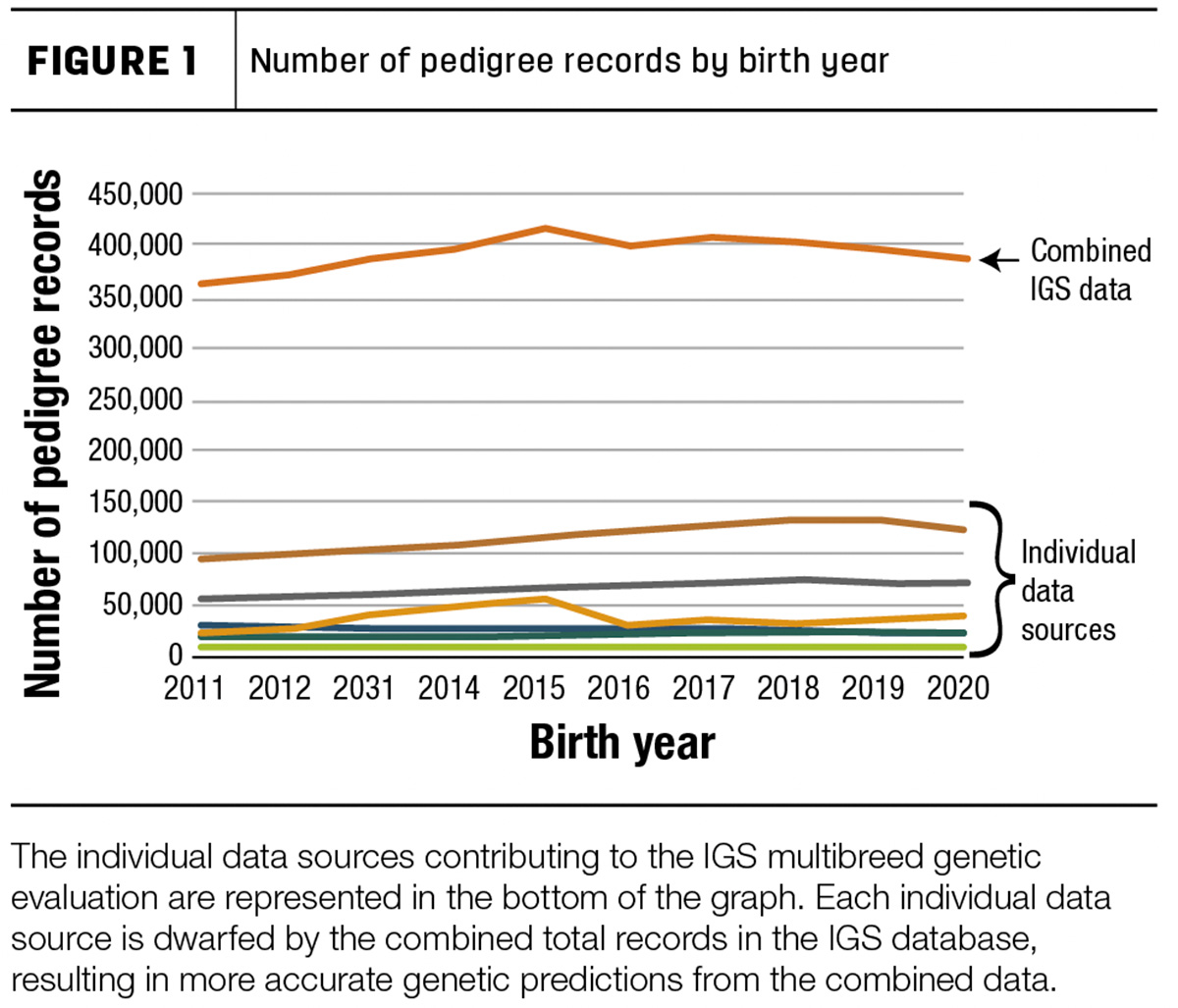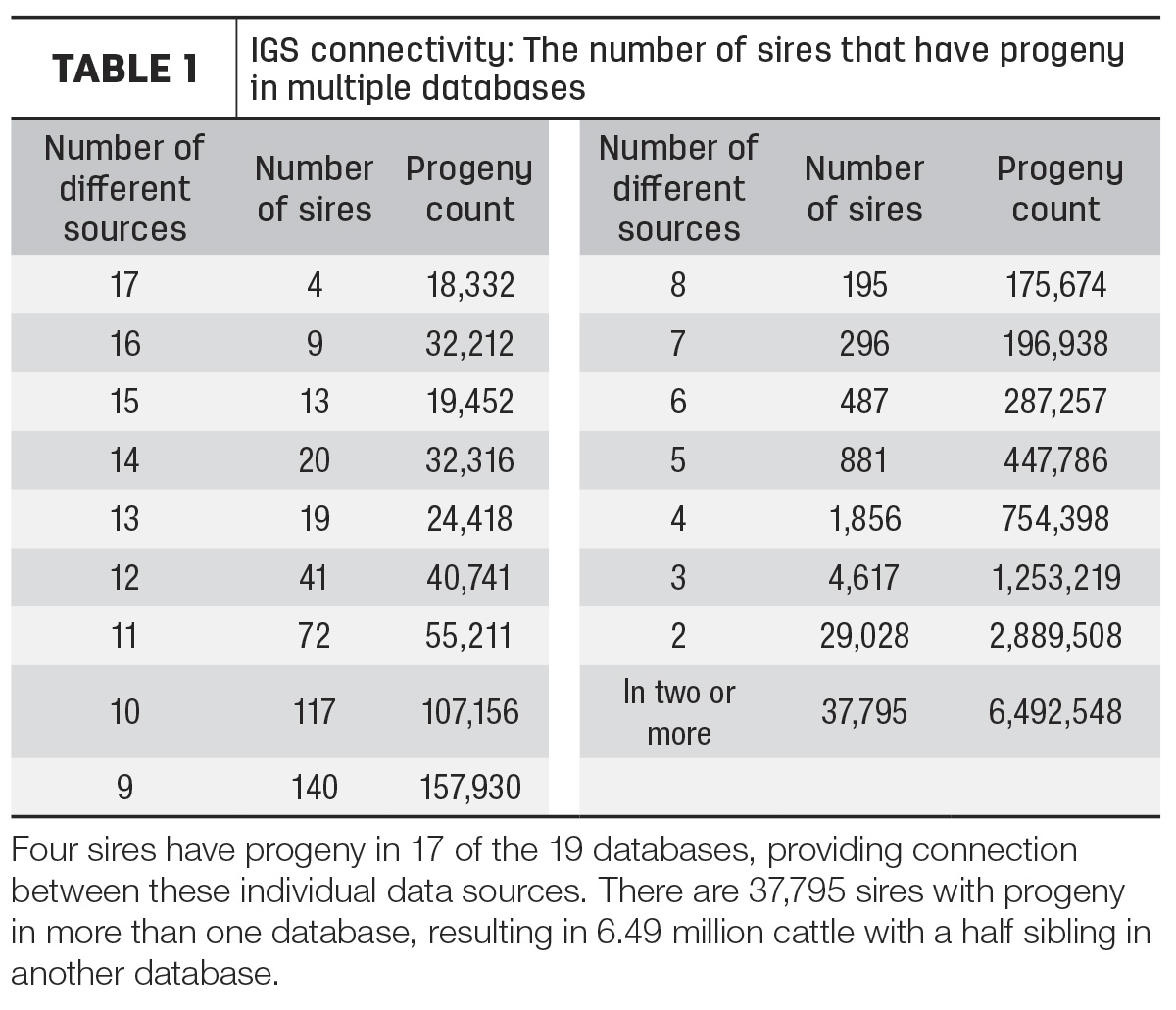International Genetic Solutions (IGS) is a collaboration among more than a dozen breed associations to provide genetic service insight and service to the industry. The organization, however, doesn’t exist to serve any of those individual breed associations, but the commercial beef cattle producer.
The cow-calf operators who thumb through catalogs looking for their next bulls to improve certain traits in their herds can make faster improvement when the prediction of the genetics of that trait are more accurate. Through the IGS multibreed genetic evaluation, the goal is to predict expected progeny differences (EPDs) as accurately and as early as possible in an animal’s life. Science and collaboration are leveraged to ensure the commercial cattle industry has the best scientific predictions to help make profitable and sustainable decisions.
Connected databases
There are 21 million cattle and 450,000 genotypes in the genetic evaluation, providing genetic services to 20 different breed associations and companies in the U.S., Canada and Australia. IGS has a unique model for genetic services. Rather than keeping each of the data sources or breed associations separate, all the data goes into a single genetic evaluation. Using one central data hub means relatives from animals in a separate database also enter into the genetic evaluation, adding information to all the animals’ genetic predictions. Figure 1 shows the collective animal records in IGS. The lines on the bottom of the graph show the number of animal records from each association based on year of birth. Even the larger data sources are dwarfed by the combined total number of animals in the database.

Pooling all this information is beneficial because the data sources have related animals. You might ask, “How connected are these databases?” The answer is, “very connected.” There are four bulls who show up in 17 of the 19 data sources in IGS, and nearly a third of the animals (6.5 million) in the evaluation have a half-sibling in another database (see Table 1). If we look at sires in one breed association and how many progeny they would have just from the single association compared to how many progeny are added by being in the IGS collective, we see up to a thirty-threefold increase for progeny on these bulls for some breed associations.

Collaborating and sharing the data in IGS not only improves the genetic prediction of the connected bulls but all their relatives as well. More data means more accurate predictions. More accurate predictions mean faster genetic progress for the commercial cow-calf producer.
Creating a more uniform system
How is the evaluation able to accommodate this large amount of data and produce the EPDs that can be used by commercial cattlemen? One of the most important parts of the evaluation process is the ability to differentiate between performance that is due to additive genetic differences and performance that is due to other genetic factors, such as hybrid vigor. This can be done because not only are there large amounts of purebred data, but also a healthy representation of different crosses of breeds included in the evaluation. The data is also analyzed with some of the most advanced statistical techniques available. The model used in all IGS evaluations is known as a superhybrid marker effects model, which efficiently uses genomic data in a single-step evaluation. This model focuses on genetic markers that cause differences in performance and culls out non-informative markers. It also allows for the more influential markers to have a larger effect on the resulting EPD values, which also increases the accuracy of prediction.
One of the benefits of this approach of a single genetic evaluation for all IGS participants is that it allows for the EPDs to be comparable across associations. When breeds would conduct genetic evaluations independently, it was more difficult to compare different predictions and uncertain how to compare hybrids. However, the collaboratively generated EPDs are directly comparable. Fourteen traits are currently evaluated and published as part of the IGS genetic evaluation, including genetic predictions for Calving Ease, Growth, Stayability, Docility and Carcass traits. The focus of the predictions has been on economically relevant traits and to try to do so with the fewest predictions possible to help simplify selection decisions.
Genetic evaluations are currently being developed for several traits, including Mature Cow Weight, Dry Matter Intake and Heifer Fertility. In addition to this new trait development, the current EPD evaluations are routinely scrutinized by a large group of scientists to look for strategies to continue to increase the accuracy of prediction. The IGS partnership is looking to invest in research and development with a focus on methods to increase the data flow into the evaluation or improve genetics for economically relevant traits. One underutilized area in data collection is the commercial industry. With the ability to incorporate more of this data into the genetic evaluation, the amount of information incorporated into predictions could dramatically increase.
More information about the IGS multibreed genetic evaluation is available at the website.








